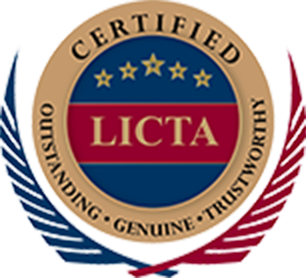电子发票2024: 跨境交易该如何处理?

电子发票2024: 跨境交易该如何处理? 什么是跨境交易? 跨境交易是指马来西亚买家与外国供应商之间的交易。这包括位于不同国家的实体之间的商品或服务的交换。 跨境交易中的外国供应商是谁? 外国供应商是指任何在马来西亚境外运营/未在马来西亚注册的供应商,包括非马来西亚个人。相反,外国买家是指从马来西亚获取商品和/或服务的任何外国个人。 跨境交易的类型有哪些? 外国卖家(供应商)向马来西亚买家(购买者)出售商品或提供服务。 马来西亚卖家(供应商)向外国买家(购买者)出售商品或提供服务。 外国卖家向马来西亚买家出售商品和提供服务 在电子发票系统下,马来西亚买家从外国卖家购买商品或服务时应做什么? 当马来西亚买家从外国卖家处获取商品或服务时,外国卖家会出具发票、收据或账单来记录交易。由于外国卖家无需遵守马来西亚的电子发票系统,马来西亚买家必须开具自开电子发票以记录该费用用于税务目的。 在这种情况下,谁担任供应商和买家的角色? 供应商:外国卖家 买家:马来西亚买家(需承担供应商角色以开具自开电子发票作为费用证明) 在跨境交易中开自开电子发票的截止日期是什么? 进口商品: 自开电子发票应在清关当月的下一个月底之前开。 进口服务: 自开电子发票应在以下两者中较早发生的当月的下一个月底之前开具: 马来西亚买家完成付款的日期; 收到外国供应商发票的日期。 跨境服务的自开电子发票中是否需要适用服务税? 是的,如果根据相关的销售与服务税(SST)法规,进口应税服务需缴纳服务税,纳税人必须在自开电子发票中包括服务税金额。 马来西亚买家是否需要将自开电子发票提供给外国卖家? 不,马来西亚买家无需将自开电子发票提供给外国卖家。电子发票仅作为马来西亚境内税务目的的费用证明。 马来西亚买家出售商品或提供服务给外国买家 目前马来西亚卖家对外国买家的开发票方式是什么? 目前马来西亚卖家会向外国买家出具发票、账单或收据,以记录商品销售或服务提供等交易。 电子发票系统实施后会发生哪些变化? 随着电子发票系统的实施,马来西亚卖家将被要求向外国买家开电子发票,以记录此类交易的收入。 如何更加了解电子发票的机制与落实方案? 你可以通过参考大马税务局(IRBM)发布的官方指南,进一步了解电子发票的机制和流程 下载 电子发票最新指南 (4.0)(发布于2024年10月4日) 下载 电子发票专属指南 (3.1)(发布于2024年10月4日) 参考 电子发票扩展指南 (更新于2024年9月11日) 你也可以考虑参与《电子发票战略课程》来获得详细与最新的资讯。 欲了解更多有关电子发票与课程详情,请点击此网址: ANCGroup_E-Invoice Courses Contact. ANC Group – Your Personal Tax Advisor Tax consulting […]
电子发票2024: 做电商必须知道的那些事

E电子发票2024: 做电商必须知道的那些事 什么是电子商务交易? 电子商务交易是指通过网络进行的商品或服务的销售或购买,使用专门设计的方式来接收或下订单。虽然订单是在网上下的,但付款和交货不一定是在网上进行的。 谁是跨境交易中的外国供应商? 外国供应商是指任何在马来西亚境外经营/未在马来西亚注册的供应商,包括非马来西亚籍个人。相反,外国买家是指从马来西亚购买商品和/或服务的外国人。 电子商务平台供应商买房开电子发票 现阶段电子商务平台供应商应如何记录交易? 目前,平台供应商向买方开具发票、账单或收据来记录交易,例如通过其平台进行的商品或服务销售。 电子发票实施后,电子商务平台供应商有哪些变化? 在实施电子发票后,平台供应商将负责作为供应商的角色,协助开具: i. 电子发票(应买方要求);或 ii. 收据(如果买方没有要求电子发票) 给买方进行交易。 在这种情况开电子发票时,各方的角色是什么? 供应商:电子商务平台供应商 买家:买房 如果买方没有请求电子发票,供应商应该怎么办? 平台供应商可以将没有电子发票请求的交易汇总为每月的合并电子发票,除了特定指南中提到的活动,并在月末后的七天内提交给马来西亚税务局(IRBM)。 商家或服务提供商是否需要开具电子发票? 不,商家和服务提供商不需要为销售的商品或提供的服务开电子发票或收据。 电子商务平台供应商向商家和/或服务提供商开自发电子发票 在电商平台交易后,会发生什么? 商家和服务提供商有资格获得因提供商品或服务而应得的付款。 在电子发票落实后,我们应该如何处理自发电子发票 (Self-Billed e-Invoice)? 电子商务平台提供商必须为所有已完成的交易向商家或服务提供商开具自开账单电子发票。 在开自发电子发票(Self-Billed e-Invoice),各方的角色是什么? 供应商:商家或服务提供商 买方:电子商务平台提供商(在自开账单电子发票中担任供应商角色) 电子商务平台提供商可以定期提交自开账单电子发票吗? 可以,电子商务平台提供商可以根据其现有的结算周期(例如每日、每周或每月)开具并提交自开账单电子发票以供验证。 电子商务平台供应商向商家和/或服务供应商开电子发票 电子商务平台供应商会向商家和/或服务供应商征收平台使用费吗? 电子商务平台供应商通常会向商家和/或服务供应商征收使用平台的费用。 对于电子商务平台供应商征收平台费用需不需要开电子发票? 需要,电子商务平台供应商征收平台费用需要开电子发票 在这种情况下开电子发票,各方的角色是什么: 供应商: 电子商务平台提供商 买方: 商家或服务提供商 如何更了解电子发票的机制与落实方案? 你可以通过参考大马税务局(IRBM)发布的官方指南,进一步了解电子发票的机制和流程 下载 电子发票最新指南 (4.0)(发布于2024年10月4日) 下载 电子发票专属指南 (3.1) (发布于2024年10月4日) […]
Issuance of e-Invoices: Top 12 FAQs You Must be Clear On

Issuance of e-Invoices: Top 12 FAQs You Must be Clear on Do businessnes need to submit an e-Invoice within the same day the transaction is being made? There is no specific requirement on the timing of e-Invoice issuance, except in specific cases such as consolidated e-Invoice, self-billed e-Invoice for importation of goods / services and […]
电子发票的处理:您必须清楚的15种关键交易

电子发票的处理:你必须清楚的15种关键交易 那些类型的收入需要纳入电子发票的范围? 电子发票适用于所有类型的收入和支出,但某些类型除外,具体请参阅《电子发票通用指南》和《电子发票特定指南》。请注意,上述豁免条款可能会定期审查和更新。 定金(Deposit)的电子发票处理方式是什么? 如果定金是可退还的,则无需开电子发票。但如果定金不可退还,则需要开电子发票。 代垫费用(Disbursement)和费用报销(Reimbursement)是否需要开电子发票? 是否需要开电子发票取决于具体情况,请参考《电子发票特定指南》第5章节获取更详细的信息。 董事费的电子发票处理方式是什么? : 如果董事签订的是服务合同 (Contract for Service),董事就需要将收到的收入想公司开电子发票。 : 如果董事签订的是雇佣合同 (Contract of Service),该费用视为雇佣收入。目前,根据《电子发票指南》,此类收入被豁免开具电子发票。请注意,此豁免条款可能会定期审查和更新。 公司内部的费用是否需要开电子发票? : 公司之间的费用需要开电子发票。 : 公司内部(部门或分部之间)的费用无需开电子发票。但企业可根据自身业务需求,选择是否开内部电子发票。 个人房东是否需要为租赁收入向租户开电子发票? : 如果个人房东从事租赁业务,则需要向租户开电子发票。 : 如果个人房东未从事租赁业务,租户(若为企业)需要为房租开自开发票。 如果水电账单是以房东名义来开,租户如何证明其支付了水电费用? 若租户无法要求将账单改为其名义,则需将水电费用包含在: : 房东(若从事租赁业务)开的电子发票中;或 : 租户(若房东未从事租赁业务)开的自开发票中。 在寄售模式下,只有在货物售出或消耗时才支付给寄售方的款项,何时应开电子发票? 寄售方(即供应商)应在货物售出或消耗时,根据当前开票惯例,向寄售方开电子发票。 支付给代理、经销商和分销商的款项,应基于应计制(Accrual Basis)还是支付制开(Payment Basis)自开发票? 支付给代理、经销商和分销商的款项可以基于应计制或支付制开的自开发票,只需确保一致性并符合提供给代理的文件(例如:对账单)。 对于某些企业代理,现在的流程主要是要代理向公司开发票。电子发票落实后,是否可以保留现有流程还是企业代理必须开自发电子发票? 无论代理、经销商和分销商是个人还是企业(即供应商),付款方(即纳税人)必须开自发电子发票,并在验证后与供应商共享。供应商无需向付款方开电子发票。 对于现金奖励,是否可以根据提供给代理的周期性对账单开自发电子发票? 可以,现金奖励的自发电子发票可根据现有的周期性对账单(例如:每两周或每月)来开,并在发票中输入正确的分类代码。 对于非现金式奖励(如奖励旅行、礼品等)通常只在年度CP58准备时才能知晓,那这类信息是否可以在年度提供? 可以,如果这类信息只在年度CP58准备时获得,则可在年度提供。然而,若此类信息按应计制、支付制或周期性对账单提供,则应与自开发票一起按相同频率提交给税务局,并输入正确的分类代码。 自发电子发票是否可以以净额(总金额减去冲销)的形式来开,以与对账单中支付的总金额一致? 可以,自发电子发票可以以净佣金形式开具(总金额减去冲销),但需确保佣金冲销的明细包含在发票中。 针对利息支付所开的自发电子发票,应基于应计制(Accrual Basis)还是支付制开(Payment Basis)来开? 针对利息支付的自发电子发票可以基于应计制或支付制开。 如何更加了解电子发票的机制与落实方案? 你可以通过参考大马税务局(IRBM)发布的官方指南,进一步了解电子发票的机制和流程 下载 […]
e-Invoicing 2024: Vouchers, Gift cards and Loyalty Points

e-Invoicing 2024: Vouchers, Gift Cards and Loyalty Points Do we need to issue e-Invoice upon sale / giveaway of vouchers? In cases where the voucher is given for free or is refundable in nature, no e-Invoice is required to be issued. However, if the voucher sold is non-refundable, issuance of e-Invoice is required. Is e-Invoice […]
Treatment of e-Invoices: Top 15 Transactions that You Must be Clear On

Treatment of e-Invoices: Top 15 Transactions that You Must be Clear On Which types of income fall into the scope for e-Invoice, considering taxpayers may have a range of income sources of contributing to their annual turnover (e.g., interest income, investment income, gains from investment disposal)? e-Invoice is required for all types of income and […]
开电子发票:12个最常见问题

开电子发票: 12个最常见问题 电子发票是否一定要在交易日当天开?还是能在交易日过后补开? 并无强制要求交易当天开具电子发票,除非以下情况: 对于合并电子发票 供应商需在月末后的七天内开合并电子发票。 对于进口货物的自开电子发票 马来西亚买家需在收到清关当月的次月月底前开具自开电子发票。 对于进口服务的自开电子发票 马来西亚买家需在以下两者中较早的情况发生后的次月月底前开具自开电子发票: 马来西亚买家付款的日期; 收到外国供应商发票的日期。 上述(1)和(2)的确定需根据适用于进口应税服务的现行规则执行。 对于外汇收入的电子发票 供应商(即收入接收人)需在收到外汇收入的当月后的次月月底前开具电子发票。 *如有任何特定法律适用,请根据相关法律规定执行。 买家未要求电子发票的情况下,企业是否可以为所有类型的交易开合并电子发票? 是的,供应商可以为买家未要求电子发票的交易开具合并电子发票,无论是企业对企业(B2B)、企业对消费者(B2C)还是企业对政府(B2G)的交易。但需注意,不包括《电子发票专项指南》第3.7节中列出的交易或活动。 Myinvois Portal 是否允许在最终确定和发出之前创建并存储草稿形式的电子发票? 是的,供应商可以创建草稿或形式发票。电子发票只有在验证成功后才会被接受。 如果没有遵循电子发票准则会有什么影响吗? 未能开出电子发票是根据1967年《所得税法》第120(1)(d)条文的违法行为,将会导致罚款不低于RM200且不超过RM20,000,或监禁不超过6个月,或两者兼施,每次违规均适用。 Myinvois Portal 是否允许在电子发票经马来西亚税务局(IRBM)验证后编辑信息? 不允许,供应商需要在验证后72小时内取消电子发票并重新开新的电子发票。 验证后72小时内的任何更改,都要求供应商开新的电子发票(例如,借记单、信用单、退款单电子发票)以调整原先发出的电子发票。此后,需要根据情况重新开具新的电子发票。 供应商是否有调整窗口可以取消已提交马来西亚税务局(IRBM)的发票? 是的,供应商可以在72小时内取消电子发票。有关详情,清参阅电子发票指南的第2.3.6节或第2.4.5. 如果开票人在开具电子发票/自开票电子发票时不小心犯了错误,或提供了不准确的信息,并且在电子发票/自开票电子发票验证后的72小时内发现此错误,开票人应如何纠正? 如果开票人在验证后的72小时内发现错误,可以取消已由马来西亚税务局(IRBM)验证的电子发票,并随后重新开具新的电子发票。 如果开票人不想取消电子发票,而决定开具信用单/借记单/退款单电子发票进行调整,是否允许? 是的,即使在72小时时间框架尚未到期的情况下,开票人也可以开具信用单/借记单/退款单电子发票,以反映对原始电子发票的必要调整。 请注意,在开具信用单/借记单/退款单电子发票时,必须在“原始电子发票参考号码”字段中包含受影响的原始电子发票的唯一标识号码。 如果开票人直到下周才发现错误,应该如何纠正? 如果在72小时的时间框架之后才发现错误和/或需要对已开具的电子发票进行任何修改,开票人必须通过开具信用单/借记单/退款单电子发票来反映这些修改/调整。 请注意,在开具信用单/借记单/退款单电子发票时,必须在“原始电子发票参考号码”字段中包含受影响的原始电子发票的唯一标识号码。 在72小时验证期之后,开电子发票调整(即借记单、信用单和退款单)的时间限制是多长? 对于供应商开具电子发票调整没有时间限制。纳税人可以根据各自公司的政策进行任何电子发票调整。由于外国供应商和/或买家通常不使用MyInvois系统,因此任何电子发票调整将通过开具借记单、信用单和退款单电子发票来完成。 纳税人是否可以开一张信用单(Credit Note)电子发票来调整原始电子发票? 是的,纳税人可以通过开一张单一的信用单/借记单/退款单电子发票来调整多个原始电子发票,具体情况视情况而定。请注意,调整也可以应用于合并的电子发票。 在同一张信用单/借记单/退款单电子发票中调整多个原始电子发票时,必须在“原始电子发票参考号码”数据字段中标明每张原始电子发票的IRBM唯一标识号码。通过API传输的纳税人,请注意参考SDK以输入适当的代码。 如果调整是针对在实施电子发票之前已开的原始发票(即未分配IRBM唯一标识号码的发票),则纳税人可以在“原始电子发票参考号码”数据字段中输入“NA”。 退款给买家是否需要开电子发票? 是的,退还款项给买家时需要开具退款单电子发票,以下情况除外: 买家错误支付 买家多付 退还保证金 如果更加了解电子发票的机制与落实方案? 你可以通过参考大马税务局(IRBM)发布的官方指南,进一步了解电子发票的机制和流程 下载 电子发票最新指南 […]
E-Invoicing for E-Commerce 2024: Everything You Need to Know

E-Invoicing for E-Commerce 2024: Everything You Need to Know What is an e-commerce transaction? An e-commerce transaction involves the sale or purchase of goods or services conducted over networks using methods specifically designed for receiving or placing orders. While orders are placed online, payment and delivery may not necessarily occur online. Who is a foreign […]
Latest e-Invoicing 2024: Cross Border (Overseas) Transactions

e-Invoicing 2024: Cross Border (Overseas) Transactions What is a cross-border transaction? A cross-border transaction involves a transaction between a Malaysian buyer and a foreign supplier, or vice versa. This includes the exchange of goods or services between entities located in different countries. Who is a foreign supplier in cross-border transactions Foreign supplier refers to any […]
电子发票:代理、经销商或分销商的交易

电子发票:代理、经销商或分销商的交易 什么是业务供应链中的代理、经销商或分销商? 在业务供应链中,代理、经销商或分销商的使用十分常见。代理、经销商或分销商(即第三方/中介)通过向客户销售产品或提供服务赚取佣金。 卖家向购买者开电子发票 当商品或服务通过代理、经销商或分销商购买时,电子发票的处理流程是什么? 卖方必须向购买者开电子发票以记录交易。 如果购买者未要求电子发票,卖方需开具普通收据。在月末,卖方必须在七个日历日内将这些收据合并为一张电子发票,作为收入证明。 开电子发票的详情可以参阅 电子发票指南第3.5和3.6节. 在此场景中,谁是供应商和购买者? 供应商:卖方 购买者:买方 买家向代理,经销商或分销商开自发电子发票 当代理、经销商或分销商从卖方获得佣金或奖励时会发生什么? 卖方需要开自开电子发票,以记录支付给代理、经销商或分销商的佣金或奖励。这符合《1967年所得税法》第83A条的规定。 电子发票的开具流程详见电子发票指南第2.3和2.4节。 在自发电子发票的场景中,谁是 供应商:代理、经销商或分销商 购买者:卖方(作为费用证明开具自开电子发票) 如何更加了解电子发票的机制与落实方案? 你可以通过参考大马税务局(IRBM)发布的官方指南,进一步了解电子发票的机制和流程 下载 电子发票最新指南 (4.0)(发布于2024年10月4日) 下载 电子发票专属指南 (3.1)(发布于2024年10月4日) 参考 电子发票扩展指南 (更新于2024年9月11日) 你也可以考虑参与《电子发票战略课程》来获得详细与最新的资讯。 欲了解更多有关电子发票与课程详情,请点击此网址: ANCGroup_E-Invoice Courses Contact. ANC Group – Your Personal Tax Advisor Tax consulting is the core service of ANC Group. Our tax professionals provide clients […]






